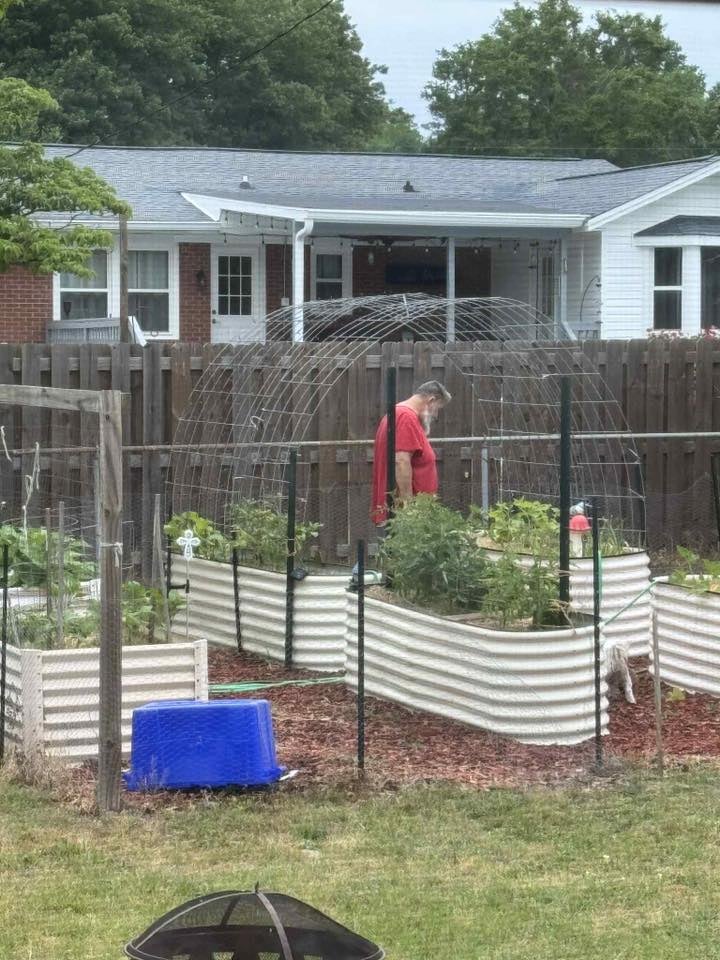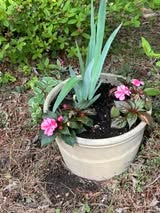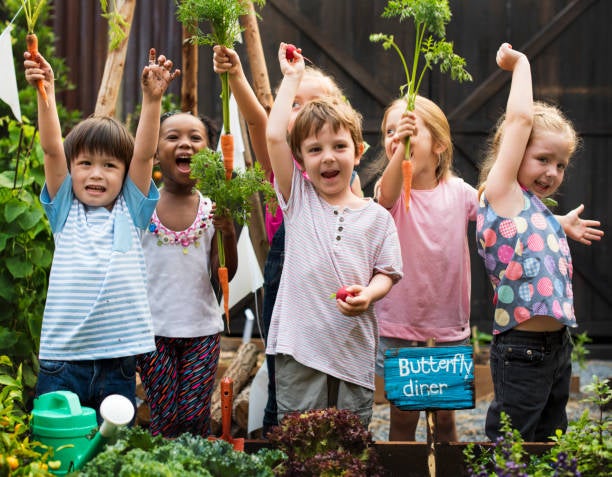In the human era of magnets and miracles where more things seem to happen online than in real life, hobby gardening is a great learning and bonding experience for kids.
It is not too late to sow seeds and start a hobby garden as our Southeastern climate has a relatively long growing season. The first article in this series explores how to plant a garden on a budget: Gardening tips for newbies.
Many adults don’t know that plants actually grow during the night and that fact is amazing to kids. In fact, kids will make checking on the plants to see how much they grew during the night while everyone slept a part of their morning routine. It might not be as exciting as a visit from Santa, but it is rather amazing in the eyes of a child.
It is that little twinkle of awe on a kid’s face that makes parenting so fun and rewarding!
In fact, when youngsters realize that they are growing and nurturing a life form, most kid’s “responsibility gene” will kick in and they will learn to watch the sun’s arc for dusk to arrive every day knowing that is the time to tend and water their “soil babies.”
MORE: AU celebrates masters, doctoral degree recipients with hooding ceremony
Learning without even realizing it
The best part about gardening is that kids can learn without even realizing they are learning and it takes them off of Minecraft for a few hours. It also teaches them practical experience that they simply cannot get in a classroom. Kids love it when getting dirty is part of the activity, especially when they get the reward of being squirted off with the water hose.
So, turn your backyard or front porch into your kids’ science lab!

Once the soil has been turned and the seeds planted, it is important to follow the weather forecast everyday with your kids. Both The Weather Channel and the National Weather Service are excellent resources that will teach your child to follow the weekly weather outlook and they will learn to avoid watering if heavy rainfall is expected the next day.
After a couple of cocktails, any meteorologist will admit they use The Weather Channel and NOAA as their primary sources!
Make use of the local library
The National Head Start Association recommends a trip to the local library with the kids to help get them excited about gardening. They recommend checking out the winners of the Growing Good Kids Book Awards as a starting point.
Of course, make it age appropriate. Younger children, of course, like picture books and the more intermediate set can choose volumes that might be more specific to the type of plants that are being grown in the family garden. Occasionally, the local library will host programs that are interactive and, sometimes, hands on learning on this topic.
The parent can also do some reading that bore the younger set, such as when and how to prune back basil plants and how to test the soil’s Ph balance.
MORE: MotorHeadline: The Slate Pickup is what people asked for, but will it sell?
Hobby gardening is a great way to learn problem solving

Tomatoes are notorious for fungal diseases such as early blight and late blight, insect infestations and nutritional problems like blossom end rot. Other plants are more robust and suffer few ailments, but plants can get “sick” just like humans.
Some issues can be addressed by changing the amount of water the plants receive. Meanwhile, pests such as aphids and hornworms, can be warded off by using Sevin Dust, which is environmentally friendly and found at any hardware store.
Your kids can also learn important lessons on how nature solves a lot of these problems on its own, with your help, of course. Planting marigolds throughout the garden will attract pollinators such as bumble bees and butterflies, species that are vital for the garden to grow and marigolds also ward off the unwanted bugs through their smell.
Let the kids’ creativity run wild
Older kids will get into plotting out the garden by checking out an almanac or doing an internet search to learn what plants compliment each other. Some plants leach nitrogen from the soil, other plants excrete nitrogen through their roots.
A great history lesson is to read with the kids about how the Native Americans in the 16th Century showed arriving European settlers how planting the “three sisters” together made for a successful crop that would feed their families for the entire winter. The three sisters are corn, beans and squash and are a combination of plants of which take different nutrients from the soil along with others that replenish them.
Get the neighbors involved

It might be a good idea to keep a lookout for neighbors who are gardeners, especially those that are, um, up there in years, they are usually great at spreading wisdom and are also usually for with a story or two about ‘the good ‘ole days.”
Many times you will find that older neighbors remember the tips that were once passed on from generation to generation as a means of survival. The people who were kids during World War II remember their parents growing “victory gardens” as rationing took hold in America during that time.
Plus, its always nice to get to know the people who live near you and it teaches kids good social skills as well.
Scott Hudson is the Senior Investigative Reporter, Editorial Page Editor and weekly columnist for The Augusta Press. Reach him at scott@theaugustapress.com











